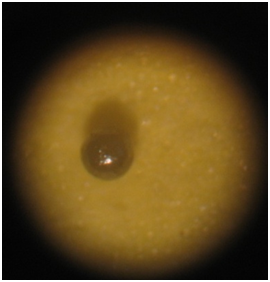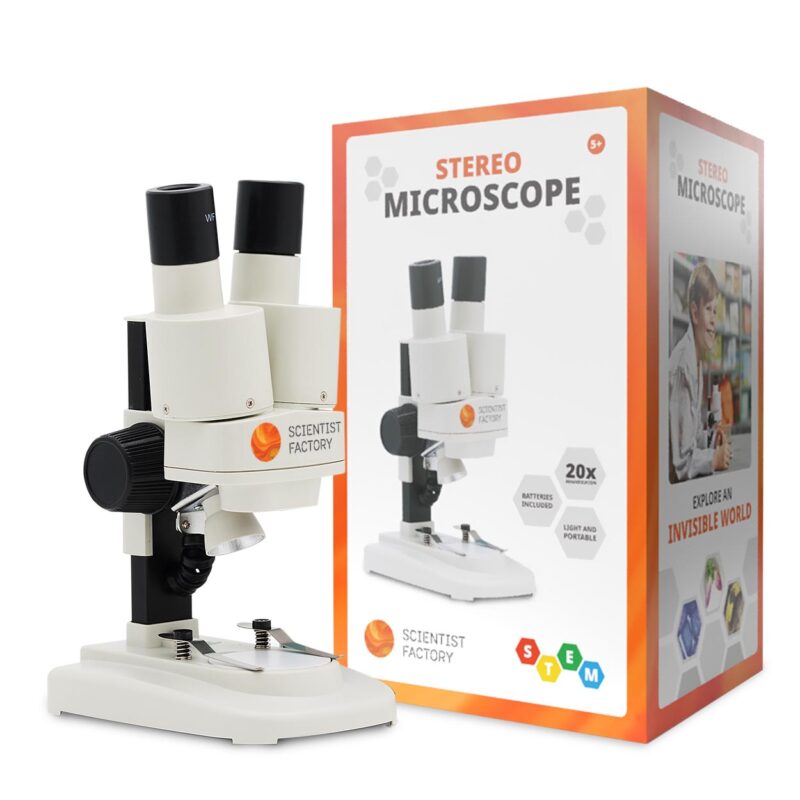Astronomy
How to Find Micrometeorites
You can find stardust, or micrometeorites, almost anywhere. I got slightly addicted to looking for them a few years ago, after reading that 10 tonnes of micrometeorites fall through the atmosphere every day. These meteorites are leftovers from the dust that gathered when our solar system came into being. They tend to have a diameter of half a millimeter and often contain iron. The iron content makes it possible to distinguish micrometeorites from regular dust by using a magnet. Shortly after learning about this, I found myself on my knees in the driveway with a magnet inside a plastic cup, collecting as many micrometeorites as possible. I transferred the catch to the glue on a sticky note and proceeded to study the micrometeorites under a microscope in the kitchen.

What I saw in the microscope made me burst out in joy. A beautiful metal ball met my eyes. I was entirely sure it had to be a micrometeorite. What else could it be? But I grew uncertain after hunting some more because I seemed to find them everywhere. On the fence, the grass, and under the car. Could it be possible? I gathered samples elsewhere in the city, and nearly all contained micrometeorites.
I discussed the matter with some experts and quickly realized that there many potential sources of errors. Tiny metal spheres form every time melted metal is released, for example, when you break your car too suddenly. The sphere is the most energy stable shape with the most volume on the smallest possible surface. Soap bubbles are round for this exact reason. I realized that some of the “micrometeorites” were not stardust but terrestrial metal. But I did not give up. In 2008, some of our students at Scientist Factory needed a new science project. We equipped them with magnets for collecting micrometeorites. After a few weeks, we visited two scientists who let us examine the findings with a special microscope. The microscope could reveal what atoms something consists of, and if our metal spheres were micrometeorites, they should contain nickel and iron. I was surprised to find that a sample I had collected in the forest contained no nickel. The wind can carry manufactured metal debris to the most remote places.
Many of the beautiful metal spheres we might find hunting in the streets are probably artificial. But there is no reason to despair for that reason. Our streets are full of stardust, no matter how you look at it. We are stardust, and nearly all atoms on Earth came into being when stars died. This makes us and everything around us stardust. Besides, we probably find real micrometeorites some of the time. Follow these steps if you want to hunt for them yourself:
Equipment
- A strong magnet
- Clingwrap
- Sticky notes
- Microscope
Instructions
- Wrap the magnet in clingwrap. Hold the magnet about 1 cm over the area where you want to search
- Glide the glue strip from the stickynote along the dust so that it transfers to the note
- Study the dust in a microscope or magnifying glass. You will see many small rocks with irregular shapes, but you might also see some that are perfect speheres. These might be micrometeorites. In that case, they were extremely hot and melted as they entered the atmosphere. They then hardened into spherical or slightly tear-drop-shaped particles
Inspect your findings with our bestselling microscope!

Stereo Microscope for Children
- The perfect microscope for children
- Examine bugs, rocks, fabrics and other fascinating things
- Only weighs 500 grams
- Adjustable for distance between eyes
- Magnifies 20x
- LED light, 2 AA batteries (included)
- Cordless and perfect for fieldtrips
Seeing everyday objects from a new angle allows us to see that the world we live in truly is amazing, and deserves precious care.

